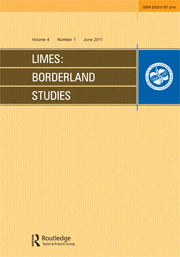City Festival - a Traditional Cultural Expression of the Creative Industries (The Case of International Contemporary Dance Festival “New Baltic Dance”
City Festival - a Traditional Cultural Expression of the Creative Industries (The Case of International Contemporary Dance Festival “New Baltic Dance”
Author(s): Rasa LevickaitėSubject(s): Cultural Essay, Political Essay, Societal Essay
Published by: Vilnius Gediminas Technical University
Keywords: city; contemporary dance; creative industries; festival
Summary/Abstract: The article is based on theoretical overview on the subject of festival with its focus on special occasion having some unique aspect which is important to both the organizers and visitors of the festival. Second part of the article represents a case of International Contemporary Dance Festival. City festival is a traditional cultural expression of the creative industries. Creative city more rapidly develops through festival activities – creative cities use their creative potential in various ways: cultural activities, expressions, experiences, involvement of city inhabitants and visitors, presentation of city cultural heritage assets. A case study presented in the article is based on quantitative survey conducted during International Contemporary Dance Festival “New Baltic Dance” which took part in Vilnius 4–9 May 2010. Survey is designed for five key factors: choosing the festival, frequency of festival visits in Vilnius, transportation type visitors have arrived to the festival, channel visitors have found information about the festival, expenses during the festival period (including entrance ticket, overnight if needed, etc.), and each variable correlation between age, gender and education. Survey also includes fact-finding questions as destination festival visitors have arrived from and if festival visitors have used hotel services. While comparing goals of festival organizers and survey results, a conclusion is made that “New Baltic Dance” is a part of Vilnius city creative industries, meeting aims of the capital city and also of other Lithuanian cities and peripheries, attracting university graduates who have high demand for contemporary culture expressions and interest in contemporary dance process. On the other hand, festival visitors almost have no direct demand for better city tourism infrastructure and their economic input to the city development is very low.
Journal: LIMES: Cultural Regionalistics
- Issue Year: 2011
- Issue No: 1
- Page Range: 36-53
- Page Count: 18
- Language: English

